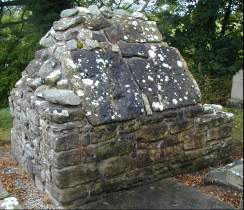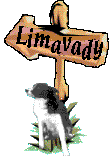|
Bovevagh
Old Church |

Bovevagh Old Church ruins Grid reference C668140 |
|
High above the Bovevagh River a mile or so outside the
village of Burnfoot is this splendid old place. Surrounded by old and
new graves, it is well looked after. Here you find the ruins of the old
church, no carvings or mouldings survive, which makes it very difficult
to date the place. The walls consist of a patchwork of alterations and
repairs dating from the 13th to the late 18th century. The builders
must have been worried that
their handiwork might slide down the rock into the Bovevagh, because
they have given the wall facing the river a rather elegant curve, thus
providing extra stability and peace of mind.
The name Bovevagh is derived from "Both Maeve" meaning "The church of Maeve". The location is thought to be a monastic site first written about when an earlier wooden church burnt down in 1100. During the middle ages it served as the parish church but it was ruined and rebuilt in 1622. It was in continuous use until the early 19th century. |
 |
 |
Outside the main building is a very early mortuary house. This is in fact the oldest feature of the site and is shown on the left. It looks like a miniature house and is quite rare in Ulster. Mortuary houses usually contained the relics of a local saint. There was a small hole in the east wall so that the visitor could touch the occupier of the tomb - presumably gaining spiritual advantages in the process. This custom was popular in medieval times but has died out since. |
|
Return
to history page
|
Back to the start

|
Continue with next
page
|

